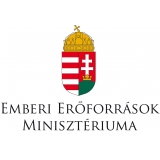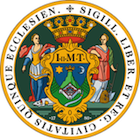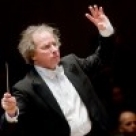Main Sponsors
-
 Reiso Pécs
Reiso Pécs -
 Hotel Lycium****
Hotel Lycium**** -
 Pécs ZOO
Pécs ZOO -
 http://www.mecsekegyesulet.hu/
http://www.mecsekegyesulet.hu/ -
Doro Ékszer
-
 Hetényi Pincészet
Hetényi Pincészet -
 Zsályaliget Élménypark
Zsályaliget Élménypark -
 Fabrik Barkács Szaküzlet
Fabrik Barkács Szaküzlet -
 Katica tanya
Katica tanya -
 E.ON Hungary
E.ON Hungary -
 http://www.ipark-pecs.hu/
http://www.ipark-pecs.hu/ -
 https://www.otpbank.hu/otpklub/Fooldal
https://www.otpbank.hu/otpklub/Fooldal -
 http://www.pecsibalett.hu/hindex.html
http://www.pecsibalett.hu/hindex.html -
 www.lakics.hu
www.lakics.hu -
 Gépszer
Gépszer -
 http://www.kormany.hu/hu/emberi-eroforrasok-miniszteriuma
http://www.kormany.hu/hu/emberi-eroforrasok-miniszteriuma -
 http://www.pnsz.hu/
http://www.pnsz.hu/ -
 http://www.pecs.hu/
http://www.pecs.hu/ -
 Mischl Autóház
Mischl Autóház -
 Öko-Trade Ltd
Öko-Trade Ltd -
 Bóly and Vicinity Savings Bank
Bóly and Vicinity Savings Bank -
 Mecsekerdő Forestry Ltd
Mecsekerdő Forestry Ltd -
 http://www.deltakarek.hu/
http://www.deltakarek.hu/ -
 University of Pécs
University of Pécs -
 http://kloe.hu/
http://kloe.hu/ -
 http://www.lafarge.hu/
http://www.lafarge.hu/ -
 http://www.gondoldo.hu/
http://www.gondoldo.hu/


PFZ200Erkel200Liszt200
20 Oct 2011. 19:30 | Kodály Centre
Breitner Season ticket 2011/2012 | Kodály Season ticket 2011/2012 |
Orchestra
Pannon Philharmonic OrchestraConductor

András Keller
Soloist

Concerto Budapest

Dénes Várjon
piano
About the Programme
Program:
- Liszt: Two Episodes from Lenau’s Faust - Procession by Night; Mephisto Waltz
- Liszt: Malediction
- Mahler: Symphony No.5
Orchestra: Budapest Concerto
Franz Liszt walked round the Faust-theme several times in his life. He reshaped the Goethean principal idea in his Faust Symphony. The “Two Episodes from Lenau’s Faust” are scene-like pictures: The Night Procession illustrates a pilgrims’ march, the “Dance in the Village pub” is rather a horrific than a bacchanalian feast. The two episodes are rarely played together at concerts.
Before composing his three well-known piano concertos, Liszt carefully got closer to the genre: his experimenting in his youth resulted a concerto accompanied by a string orchestra. In the work, which was appraised by Moscheles as “chaotically beautiful” the composer gave advises to the performing of the characters. The first theme got the mark Malédiction – the music world learnt the piece with this title.
At the top of his professional activities, during the prosperous period of his private life, Gustav Mahler composed his Symphony No.5. But not oppugning his self-tearing character, he said about its premiere: "Nobody understood it." The time contradicts the Master; Herbert von Karajan described the work as one with a transforming power: "The audience forgets the passage of time; furthermore they forget to breathe as well. Astonishing."

























































































































